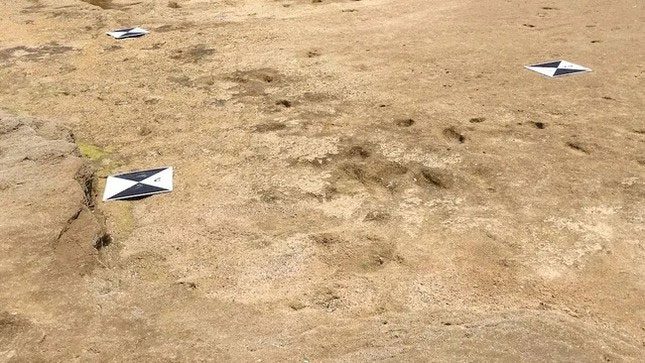Researchers in Morocco have accidentally discovered a pathway containing 85 well-preserved human footprints, making it one of the oldest in the world.
Ancient Footprints on the Beach
Two ancient human footprints imprinted on a beach in Morocco have formed one of the largest and best-preserved sets of footprints globally.

Researchers have discovered 85 footprints left by humans on a beach in Morocco. (Photo: M. Sedrati, et al).
According to a study recently published in the journal Scientific Reports, researchers stumbled upon the site with the footprints near the northern tip of North Africa in 2022 while examining rocks on a nearby beach.
Mouncef Sedrati, an associate professor of coastal dynamics and geology at the University of Southern Brittany in France, stated: “Between tidal cycles, I told my team to head north to explore another beach and was utterly surprised to find the first footprint. At first, we didn’t believe it was a footprint, but then we found more traces.”
Analysis of this site, which contains the only known human traces in North Africa and the southern Mediterranean, revealed two trails comprising a total of 85 modern human footprints left on the beach.
The research team employed optical dating methods, a technique that determines when specific minerals on or near an artifact were last exposed to heat or sunlight. Based on the age of the quartz grains that make up most of the gently sloping beach sand, researchers determined that a group of Homo sapiens spanning several generations walked on the beach approximately 90,000 years ago, creating the trails. This event occurred during the Late Pleistocene, also known as the Last Ice Age, which ended about 11,700 years ago.
Sedrati added: “We took measurements on-site to determine the length and depth of the footprints. Based on the size of the footprints, we could approximate the ages of the individuals, including children, teenagers, and adults.”
The Best-Preserved Footprints
The researchers believe that the remarkable preservation of these ancient footprints is due to the beach’s location and the remoteness of the tides, which could “preserve the last footprints.”
Sedrati explained: “What’s unique is the beach’s location on a substrate covered by clay sediments. These sediments create favorable conditions for preserving traces on the sand while the tides quickly bury the beach. That is why the footprints are very well preserved here.”
However, researchers remain uncertain about what the Ice Age group was doing on the beach.
Sedrati remarked: “We hope to uncover the entire history of this group of people and what they did there.”


















































